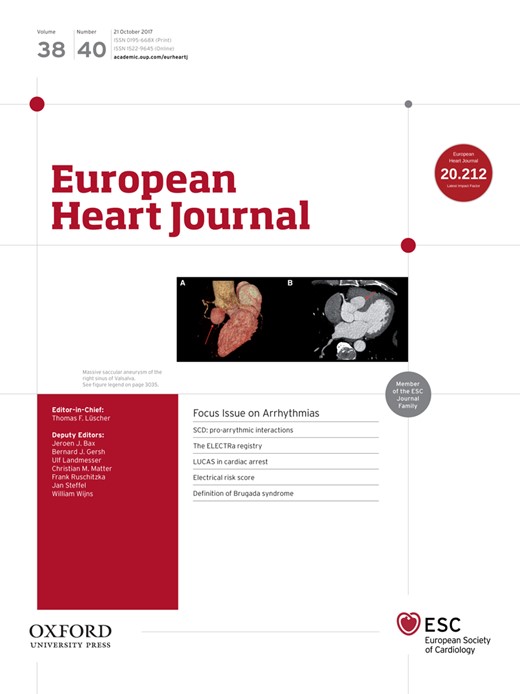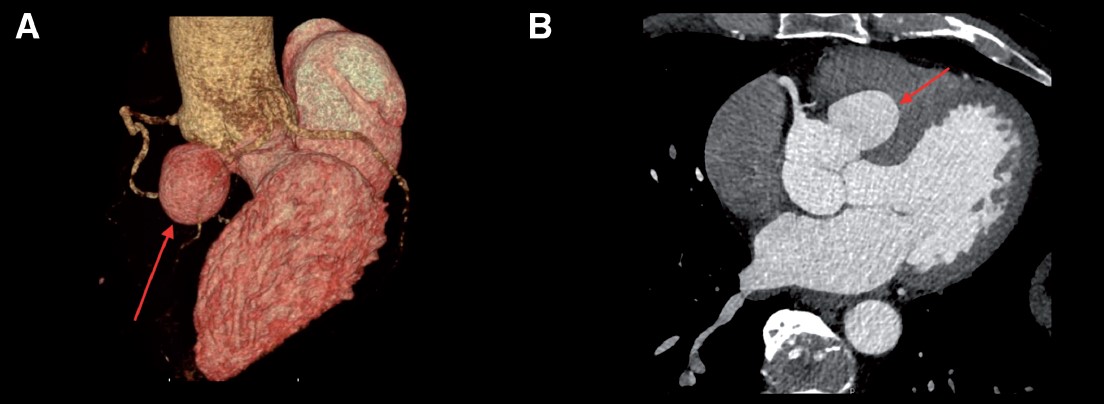
Cover image

Massive saccular aneurysm of the right sinus of Valsalva
Davide Carino1, Mrinal Singh1, Bulat A. Ziganshin1,2, and John A. Elefteriades1*
1Aortic Institute at Yale-New Haven, Yale University School of Medicine, New Haven, CT, USA; and 2Department of Surgical Diseases # 2, Kazan State Medical University, Kazan, Russia
* Corresponding author. Tel: +1 (203) 785 2705, Fax: +1 (203) 785 3552, E-mail: [email protected]
A 59-year-old man with no past medical history underwent trans-thoracic echocardiography (TTE) to investigate a cardiac murmur. The TTE revealed an aortic root aneurysm with preserved aortic valve function. A computed tomography scan was subsequently obtained, which showed a saccular aneurysm of the right sinus of Valsalva extending towards the right ventricle (Panels A and B). Its dimensions were 3.3 × 2.6 × 3.3 cm, while the overall diameter was 6.1 cm at the level of the aortic root. CT coronary angiography showed no coronary stenosis. A coronary angiogram was not performed due to the close proximity of the aneurysm to the right coronary artery ostium.
The patient was scheduled for surgery. Intraoperatively a massive saccular aneurysm was observed arising from the right sinus of Valsalva, just superior to the aortic annulus (Panel C) with an extremely large neck. The tissue surrounding the right coronary artery ostium was extremely oedematous and fibrotic, suggesting possible infective etiology. A bacteriological swab of the aneurysm was taken. A standard Bentall procedure with a 25 mm St. Jude valved conduit was performed, without complications. The post-operative course was uneventful, and the patient was discharged on the 5th post-operative day. Swab microscopy and culture results were negative.
Saccular aneurysms of the sinuses of Valsalva are rare. When the neck of the aneurysm is small, exclusion from the circulation can be achieved with direct closure. Otherwise an aortic root replacement is indicated to prevent rupture.




